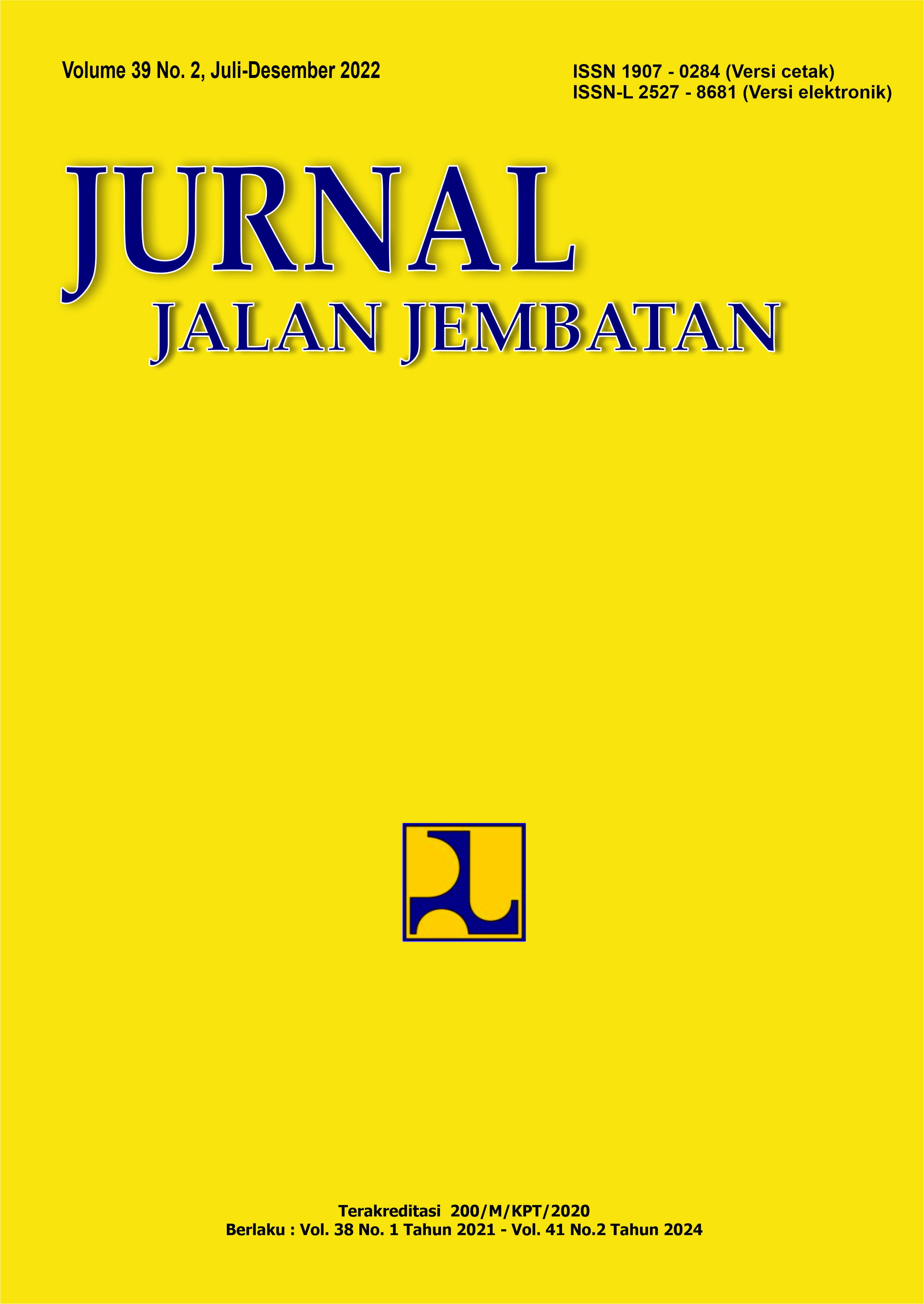THE EFFECT OF LIGHTWEIGHT FOAM MORTAR A SUBSTITUTE OF COMMON FILL ON BRIDGE STRUCTURE USING CORRUGATED STEEL PLATE
Main Article Content
Abstract
Corrugated steel structure consist of three types, i.e. standard (corrugation 152 by 51), deep (corrugation 381 by 140) and super deep (corrugation 500 by 237), but only the standard and deep types that has already produced in Indonesia. The steel structure can be used as a bridge structure in combination with the embankment on the top using common fill material. However, several flyover projects in Indonesia used corrugated steel structures with a span of 22 meters to 26 meters and lightweight foam mortar to replace the common fill. This study was conducted to perceive the effect of the use of lightweight foam mortar on the strength of the structure. The evaluation was carried out by simulating the corrugated steel structure with a span of 22 meters and a thickness of 9 mm either with common fill or lightweight foam mortar using finite element software. Furthermore, the strength parameters for each fill material was calculated refer to the Canadian Highway Bridges Design Code. There are four structural strength parameters that was reviewed, i.e. buckling strength, seam strength, plastic hinge, and displacement. The values of these parameters must be greater than 100% that indicates the force occurs is less than the allowable value, meaning the structure is in a safe condition. The calculation result of each strength parameters by using lightweight foam mortar respectively are 358%, 235%, 458% and 319%. As for that using common fill respectively are 99%, 120%, 37% and 27%. These results show, the application of lightweight foam mortar will increase the value of the structural strength parameters that make the bridge structurally safe.
Key words: corrugated steel structure, lightweight foam mortar, common fill, buckling strength, seam strength, plastic hinge, displacement.
Article Details
Authors who publish in this journal agree to the following terms:
-
Authors retain copyright and grant the journal the right of first publication with the work simultaneously licensed under a Creative Commons Attribution License, which allows others to share the work with acknowledgment of the work's authorship and initial publication in this journal.
-
Authors may enter into additional contractual arrangements for the non-exclusive distribution of the journal's published version of the work (e.g., post it to an institutional repository or publish it in a book), with acknowledgment of its initial publication in this journal.
-
Authors are permitted and encouraged to post their work online (e.g., in institutional repositories or on their website) as it can lead to productive exchanges, as well as earlier and greater citation of the published work.
Each submitted manuscript must be accompanied by a "Manuscript Originality Statement" and a "Copyright Transfer Statement".

